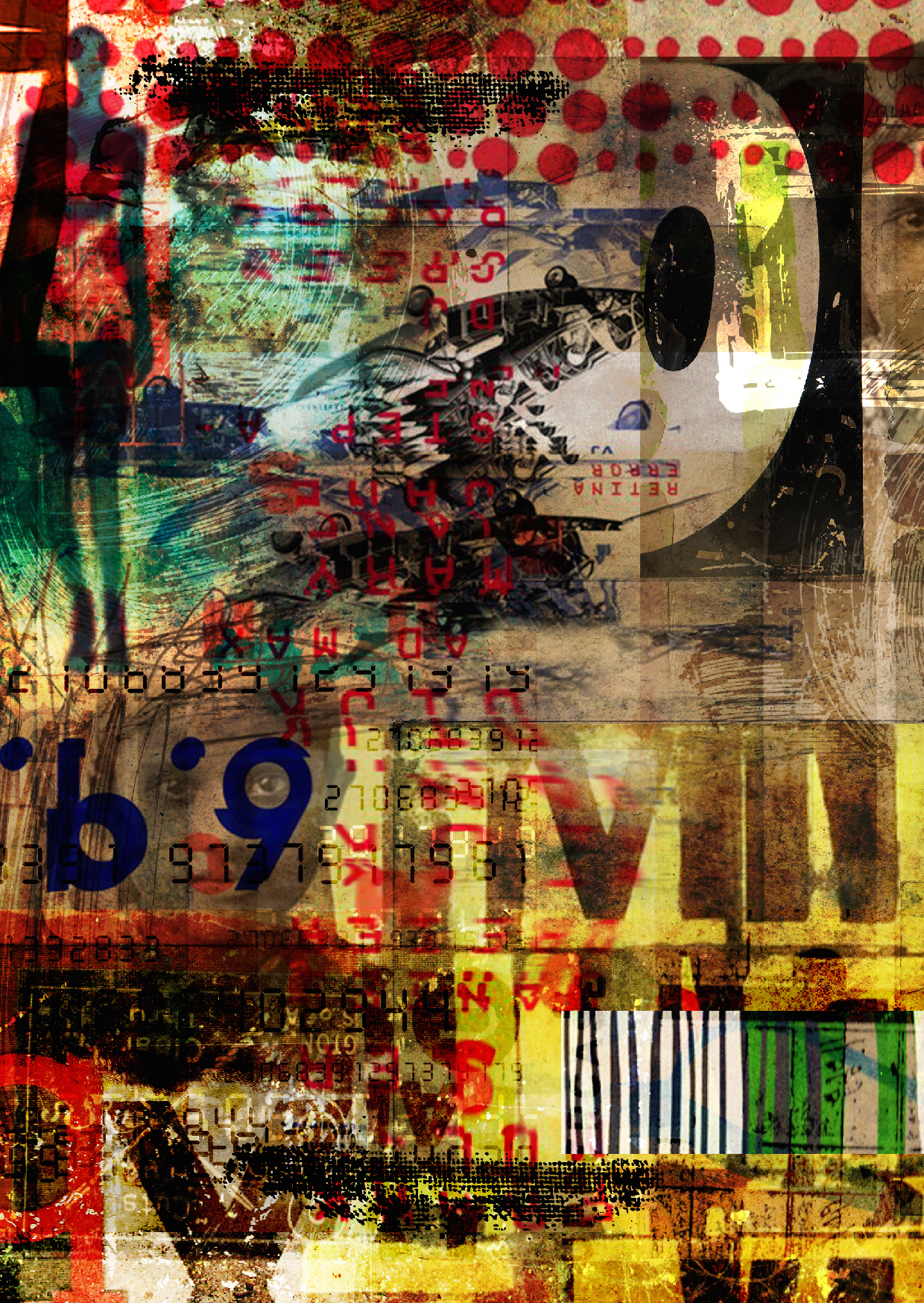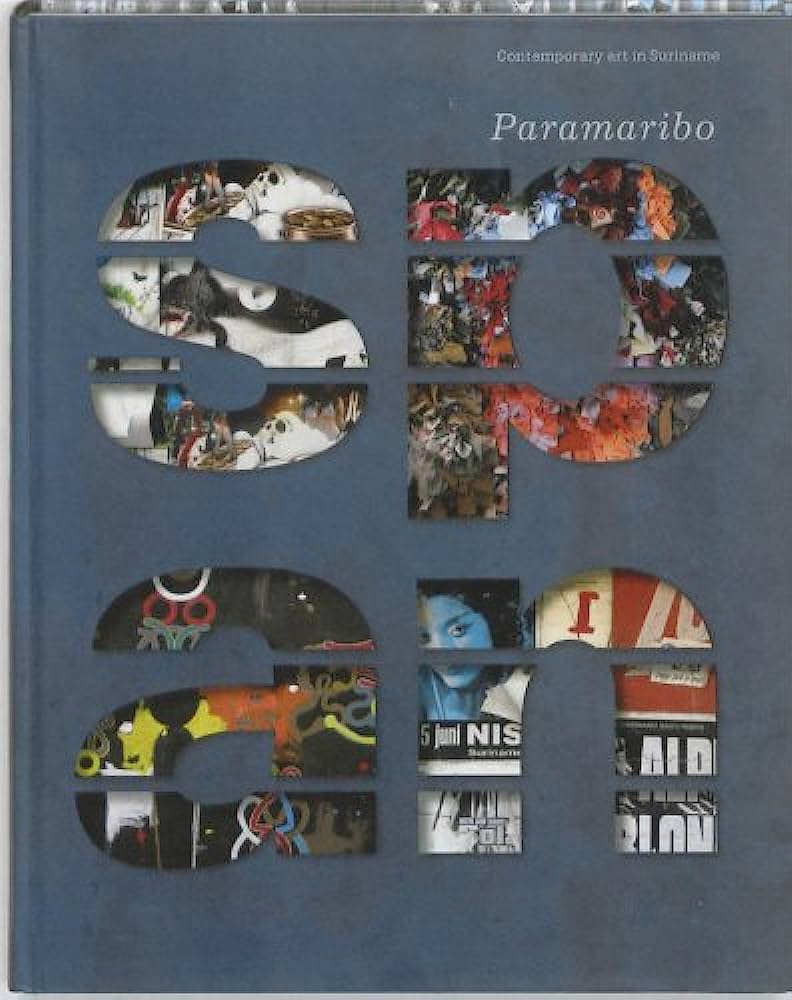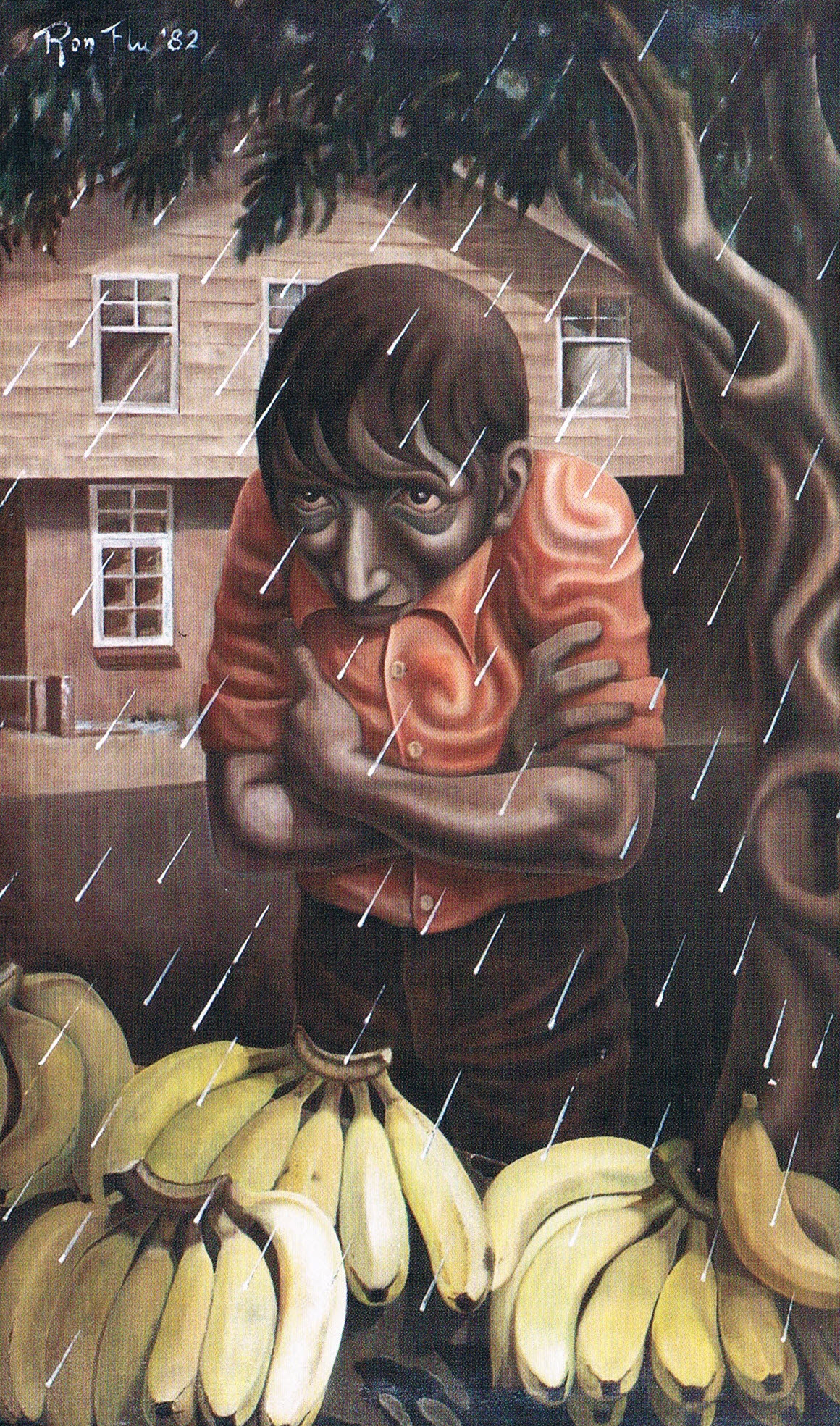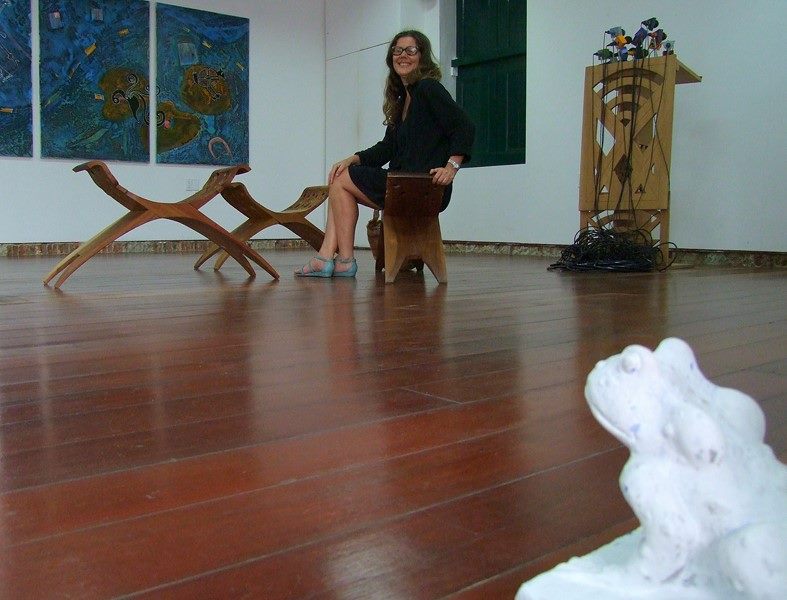So, have you ever wondered about the art scene in Suriname? Well, let me tell you, it’s really fascinating! Over the past few years, contemporary art has been on the rise in Suriname, making a name for itself on the international stage. In this article, we will delve into the emergence of contemporary art in Suriname and discover the unique style and influences that have shaped it.
Now, when we talk about contemporary art, we are referring to art that is being created in our current time, reflecting the ideas, concerns, and experiences of contemporary society. In Suriname, artists have been pushing boundaries and exploring new concepts through various mediums such as painting, sculpture, installation, and performance art. What makes Surinamese contemporary art so intriguing is the blend of influences from both its indigenous heritage and its complex history of colonization and cultural exchange.
In the coming paragraphs, we will explore some prominent Surinamese artists who have made significant contributions to the contemporary art scene. We will also take a closer look at the themes and subjects that are often explored in their artwork. So, buckle up and get ready to dive into the fascinating world of contemporary art in Suriname! Suriname, a small country located on the northeastern coast of South America, may not be the first place that comes to mind when thinking about the art world. However, over the years, this culturally diverse nation has seen a remarkable emergence of contemporary art that is capturing the attention of both local and international art enthusiasts. This article will explore the factors that have contributed to the rise of contemporary art in Suriname, the themes and subject matters prevalent in Surinamese art, and the impact it has on the artists, the local community, and the tourism industry.
Historical Background
To understand the current state of contemporary art in Suriname, it is crucial to delve into its historical background. Suriname was a Dutch colony for over three centuries until it gained independence in 1975. During the colonial era, European art traditions heavily influenced the artistic landscape, with Dutch and other European artists being the primary focus. Indigenous art traditions existed but were often overshadowed by the dominant European aesthetic.
Indigenous Art Traditions
Indigenous art traditions have played a significant role in shaping the contemporary art scene in Suriname. These traditions vary among the different Indigenous groups, such as the Arawak, the Carib, and the indigenous Maroons. Traditional art techniques, including pottery, weaving, and woodcarving, have been passed down through generations and continue to inspire contemporary artists in their exploration of their cultural identity.
Colonial Influence
The colonial era left a lasting impact on Surinamese art. European artists introduced various art forms, styles, and techniques to Suriname, creating a fusion of Indigenous and European aesthetics. European-influenced art forms, such as oil painting and sculpture, gained popularity among local artists. This colonial legacy continues to be reflected in the art produced in Suriname, with artists exploring themes of slavery, oppression, and the legacy of colonization.
Globalization and Modernization
The process of globalization and modernization has also played a crucial role in the emergence of contemporary art in Suriname. As Suriname became more connected to the global art world, local artists were exposed to different artistic movements and styles. This exposure has sparked a desire among Surinamese artists to push boundaries, experiment with new techniques, and explore their unique artistic voices.

The Rise of Local Artists
One of the most significant developments in Suriname’s art scene is the rise of local artists and the exploration of their identity through their art. Surinamese artists have begun to question and challenge the dominant narratives imposed by colonial influences, seeking to reclaim their cultural identity. This exploration has given rise to a diverse range of artistic perspectives, allowing for a more nuanced understanding of Surinamese culture.
Exploration of Identity
In their art, Surinamese artists delve into issues of identity, reflecting on their multicultural backgrounds, and emphasizing the importance of cultural heritage. They navigate the complexities of being Surinamese, with heritage rooted in Indigenous, African, Indian, Chinese, and European cultures. Through their artwork, they celebrate these diverse influences and explore what it means to be Surinamese in a globalized world.
New Perspectives on Tradition
Contemporary Surinamese artists also offer new perspectives on traditional art forms and techniques. They incorporate elements of Indigenous and colonial art traditions while experimenting with modern materials and alternative mediums. This innovative approach adds a distinctiveness to their work, bridging the gap between the past and the present.
Artistic Movements and Styles
In recent years, Surinamese artists have formed their own artistic movements and styles. These artistic movements not only provide a platform for artists to collaborate and exchange ideas but also contribute to the overall development of Surinamese art. They amplify the voices of local artists and foster a sense of community and solidarity within Suriname’s art scene.
Recognition on an International Level
Surinamese artists have gained recognition on an international level, with their works being exhibited in prestigious galleries and museums worldwide. This recognition not only validates the talent and creativity of Surinamese artists but also contributes to the global art discourse by introducing diverse perspectives and narratives. It also brings attention to Suriname as a vibrant hub for contemporary art, attracting art enthusiasts and tourists from around the world.
Evolution of Art Institutions
The growth of contemporary art in Suriname has been accompanied by the evolution of art institutions within the country. These institutions have played a crucial role in fostering the development and promotion of Surinamese artists.
Founding of Art Schools
In recent years, Suriname has seen the establishment of art schools that provide formal art education to aspiring artists. These institutions offer a structured curriculum that nurtures artistic skills and fosters creativity. The inclusion of art education within the formal education system has not only provided young artists with the necessary training but has also elevated the status of art within Surinamese society.
Establishment of Galleries and Museums
The establishment of galleries and museums dedicated to contemporary art in Suriname has provided artists with much-needed exhibition spaces to showcase their work. These institutions not only serve as platforms for artists but also contribute to the preservation and documentation of Surinamese art history. They encourage dialogue and engagement between artists, art enthusiasts, and the wider community.
Art Funding and Support
The availability of art funding and support has also been instrumental in the growth of contemporary art in Suriname. The Surinamese government and private organizations recognize the importance of investing in the local art scene and provide grants and sponsorships to artists. This financial support allows artists to pursue their artistic endeavors and create impactful works of art.
Collaboration with International Art Institutions
The collaboration between Surinamese art institutions and international art institutions has further facilitated the growth of contemporary art in Suriname. These collaborations provide opportunities for Surinamese artists to participate in residencies, exchange programs, and international exhibitions. Such collaborations not only expose Surinamese artists to new perspectives and artistic influences but also contribute to cultural exchange and cross-cultural understanding.

Artistic Themes and Subject Matters
Surinamese contemporary art reflects a wide range of themes and subject matters, each highlighting different aspects of Surinamese society, history, and culture.
Nature and Environment
Given Suriname’s lush biodiversity and rich natural resources, it is no surprise that nature and the environment are recurring themes in Surinamese art. Artists explore the beauty of the country’s landscapes, the fragility of ecosystems, and the impact of human activities on the environment. Through their art, they emphasize the need for environmental conservation and sustainability.
Social and Political Issues
Surinamese artists also use their work to address social and political issues within Surinamese society. They tackle topics such as inequality, poverty, corruption, and social injustice, reflecting the realities of life in Suriname. By shedding light on these issues, artists hope to raise awareness, provoke discussion, and inspire positive change.
Cultural Heritage and Identity
The exploration of cultural heritage and identity is a central theme in Surinamese contemporary art. Artists celebrate the diverse cultural influences in Suriname and draw inspiration from Indigenous traditions, African folklore, and colonial legacies. They challenge stereotypical narratives and remind viewers of the richness and complexity of Surinamese culture.
The Human Experience
In depicting the human experience, Surinamese artists tackle universal themes of love, loss, joy, and sadness. They capture the narratives of everyday people, their struggles, and their triumphs. By portraying these experiences, artists create a sense of empathy and connection, inviting viewers to reflect on their own lives and experiences.
Influence of Indigenous Traditions
Indigenous art traditions have had a profound influence on Surinamese contemporary art, providing a foundation for artistic exploration and expression.
Traditional Art Techniques
Surinamese artists often incorporate traditional art techniques passed down through Indigenous generations into their work. This includes intricate woodcarvings, intricate textiles, and pottery. These techniques not only preserve Indigenous cultural heritage but also add depth and intricacy to contemporary art in Suriname.
Spirituality and Rituals
Indigenous spirituality and rituals continue to inspire Surinamese artists. They draw from these traditions to explore themes of spirituality, sacredness, and connection to the natural world. By incorporating elements of rituals in their artwork, artists create a sense of reverence and invite viewers to engage with the spiritual dimensions of their culture.
Incorporation of Indigenous Symbols
Surinamese artists also incorporate Indigenous symbols and motifs into their work, providing a visual representation of Suriname’s Indigenous culture. These symbols serve as a means of preserving Indigenous heritage and create a sense of cultural pride and identity among Surinamese artists and viewers.
Preserving Cultural Heritage
The incorporation of Indigenous traditions and symbolism into contemporary art plays a crucial role in preserving Suriname’s cultural heritage. It serves as a reminder of the rich cultural diversity within the country and ensures that Indigenous traditions are not forgotten or marginalized.

Impact of Colonial Legacy
The lasting impact of Suriname’s colonial legacy is evident in its contemporary art scene. Artists explore the complexities of colonialism, reflecting on the history of slavery, oppression, and resistance.
Colonial Art Influences
Surinamese artists continue to draw inspiration from European art traditions introduced during the colonial era. They incorporate elements of European art styles and techniques into their work, paying homage to their colonial past. This fusion of Indigenous and colonial influences adds depth and richness to Surinamese contemporary art.
Reflection on Slavery and Oppression
The history of slavery and oppression in Suriname is a recurring theme in the art of contemporary Surinamese artists. Through their work, they shed light on the legacy of slavery, the ongoing impact on Surinamese society, and the resilience of Afro-Surinamese communities. By engaging with this painful history, artists encourage dialogue, healing, and the reclamation of cultural identity.
Decolonization and Empowerment
Surinamese artists also explore themes of decolonization and empowerment. They challenge the dominant narratives imposed by colonialism and assert their own cultural identities and perspectives. Through their art, they reclaim their agency and empower others to do the same.
Reclaiming Cultural Identity
Contemporary Surinamese artists actively seek to reclaim their cultural identity, both individually and collectively. They assert their Surinamese heritage and question the cultural assimilation that occurred during the colonial era. By doing so, they contribute to the preservation and revitalization of Surinamese culture and encourage a sense of pride and belonging among Surinamese people.
Contemporary Artists and Their Works
Suriname is home to a vibrant community of contemporary artists whose innovative works have garnered recognition both locally and internationally.
Renowned Surinamese Artists
Suriname boasts a diverse group of renowned contemporary artists, each with their own unique style and artistic approach. Some notable names include Marcel Pinas, Remy Jungerman, René Tosari, and George Struikelblok. These artists have made significant contributions to the development of Surinamese contemporary art and continue to inspire younger generations.
Artistic Styles and Innovations
Contemporary Surinamese artists have embraced a wide range of artistic styles and techniques, reflecting the diversity of the art community. From abstract expressionism to figurative painting, from sculpture to installation art, Surinamese artists are continually pushing boundaries and experimenting with new mediums. This innovation has contributed to the richness and vibrancy of Surinamese contemporary art.
Critically Acclaimed Artistic Installations
Surinamese artists have gained recognition for their powerful and thought-provoking artistic installations. These installations often engage with social and political issues, encouraging viewers to reflect on their own role in society. Through immersive experiences, these installations create a dialogue between the artwork, the artist, and the viewer.
Participation in International Art Exhibitions
Surinamese artists actively participate in international art exhibitions, showcasing their work alongside artists from around the world. This exposure not only provides opportunities for Surinamese artists to share their unique perspectives but also contributes to the global art discourse. By participating in these exhibitions, Surinamese artists establish themselves as important voices in contemporary art.

The Significance of Art Collectives
Art collectives have played a crucial role in the development and promotion of contemporary art in Suriname. These collaborative groups have created a sense of community, fostered artistic dialogue, and supported emerging artists.
Collaborative Approaches to Art
Art collectives in Suriname encourage collaboration and shared artistic practices among artists. By working together, artists can exchange ideas, techniques, and experiences. This collaborative approach not only enriches the work produced by individual artists but also strengthens the overall art scene in Suriname.
Community Building and Engagement
Art collectives actively engage with the local community, organizing events such as art exhibitions, workshops, and artist talks. These events provide opportunities for the public to interact with artists, gain insights into the creative process, and develop a deeper appreciation for contemporary art. Art collectives also collaborate with schools and community organizations, bringing art education and appreciation to a wider audience.
Stimulation of Artistic Dialogue
By fostering artistic dialogue, art collectives in Suriname contribute to the development and evolution of contemporary art. Artists engage in discussions and debates about the role of art in society, the exploration of themes and subject matters, and the development of new artistic techniques. This dialogue stimulates creativity and encourages artists to push the boundaries of their own artistic practice.
Promotion and Display of Art
Art collectives provide platforms for artists to exhibit and promote their work. They organize exhibitions, both locally and internationally, showcasing the talent and creativity of Surinamese artists. Art collectives also collaborate with galleries and museums to display works of art, ensuring that contemporary Surinamese art is accessible to a wider audience.
Art as Social Commentary
Surinamese contemporary art serves as a powerful tool for social commentary, addressing a wide range of social issues and advocating for positive change within society.
Addressing Social Issues
Surinamese artists use their art to address social issues, shedding light on inequality, discrimination, and social injustice. Through their work, they provoke thought and challenge societal norms, inviting viewers to critically examine the world in which they live. By highlighting these social issues, artists hope to inspire dialogue, empathy, and ultimately, positive change.
Challenging the Status Quo
Contemporary Surinamese artists challenge the status quo through their art. They question established systems, power structures, and cultural norms, encouraging viewers to critically examine their own beliefs and values. By challenging the status quo, artists create spaces for alternative perspectives and narratives to be heard and acknowledged.
Advocacy for Marginalized Communities
Surinamese artists advocate for marginalized communities through their art. They give voice to those who have been silenced or oppressed, amplifying their stories and experiences. By drawing attention to these marginalized communities, artists strive to promote inclusivity, equality, and social justice within Surinamese society.
Inspiring Change through Art
Through their art, Surinamese artists aim to inspire change. They believe in the transformative power of art to bring about positive social, cultural, and political transformation. By inspiring viewers to think differently, question existing systems, and imagine alternative futures, artists contribute to the creation of a more just and equitable society.

Supporting and Encouraging Young Artists
Recognizing the importance of nurturing emerging talent, Suriname has taken steps to support and encourage young artists.
Art Education and Mentorship
Art education and mentorship programs have been established to provide young artists with the necessary training and guidance to develop their skills. These programs offer instruction in various art forms and techniques, while also fostering creativity and encouraging experimentation. By providing access to art education and mentorship, Suriname is investing in the future of its art scene.
Youth Art Competitions and Exhibitions
Youth art competitions and exhibitions provide young artists with opportunities to showcase their work and gain recognition. These events not only encourage young artists to develop their artistic abilities but also foster a sense of confidence and pride in their work. By celebrating the creativity of young artists, Suriname recognizes the importance of supporting and nurturing emerging talent.
Career Development Opportunities
Suriname offers various career development opportunities for young artists. These opportunities include artist residencies, grants, scholarships, and artist-in-residence programs. By providing young artists with the resources and support they need to further their careers, Suriname ensures that the art scene continues to grow and evolve.
Investment in Emerging Talent
Suriname recognizes the value of investing in emerging talent. The government and private organizations provide funding and support for young artists to pursue their artistic endeavors. By investing in emerging talent, Suriname demonstrates its commitment to fostering a vibrant and sustainable art scene.
Art and Tourism in Suriname
Suriname’s vibrant contemporary art scene has also had a significant impact on the tourism industry, attracting art enthusiasts from around the world.
Artistic Attractions and Destinations
Suriname boasts a range of artistic attractions and destinations that appeal to art tourists. From galleries and museums to outdoor art installations, these attractions provide visitors with opportunities to engage with Surinamese art and culture. Art tourists can explore the rich diversity of Surinamese contemporary art through guided tours, workshops, and cultural events.
Cultural Tourism and Art Festivals
Art festivals and cultural events have become an integral part of Suriname’s tourism industry. These events showcase Surinamese contemporary art, music, dance, and cuisine, offering visitors a unique cultural experience. By incorporating art into tourism, Suriname attracts visitors who are interested in exploring the artistic and cultural aspects of the country.
Art Souvenirs and Craft Markets
Surinamese contemporary art has also influenced the market for art souvenirs and craft products. Visitors can purchase handmade crafts, such as textiles, pottery, and woodcarvings, as unique souvenirs of their trip. Craft markets provide a platform for local artisans to showcase their work and generate income, contributing to the local economy.
Tourism Revenue and Promotion
The growth of art tourism in Suriname has generated revenue and employment opportunities. The influx of art tourists has increased the demand for accommodation, restaurants, transportation, and other tourism-related services. This boost in tourism revenue encourages further investment in the arts and cultural sectors.
Artistic Collaboration and Exchange
Artistic collaboration and exchange, both locally and internationally, have played a crucial role in shaping Suriname’s contemporary art scene.
International Artistic Collaborations
Surinamese artists actively collaborate with their international counterparts, participating in joint exhibitions, artist residencies, and cultural exchange programs. These collaborations provide opportunities for Surinamese artists to share their perspectives and experiences with artists from different cultural backgrounds. By engaging in international artistic collaborations, Suriname ensures that its artists remain connected to global art trends and ideas.
Residencies and Exchange Programs
Art residencies and exchange programs enable Surinamese artists to travel and work abroad, gaining exposure to different artistic communities and international art markets. These programs provide artists with valuable networking opportunities and the chance to forge connections with artists from around the world. The experiences gained through residencies and exchange programs contribute to the growth and development of Surinamese art.
Cross-cultural Artistic Dialogues
Surinamese artists engage in cross-cultural artistic dialogues through collaborations and joint projects with artists from diverse cultural backgrounds. By sharing their artistic practices, techniques, and ideas, artists foster mutual understanding and appreciation of different cultures. These artistic dialogues contribute to cross-cultural understanding and the enrichment of Surinamese contemporary art.
Importance of Cultural Exchange
Cultural exchange plays a crucial role in the evolution of Surinamese contemporary art. By engaging in cultural exchange, Surinamese artists are exposed to different perspectives, artistic influences, and ways of thinking. This exposure broadens their artistic horizons and inspires new ideas and approaches to art-making.
Challenges and Opportunities
The emergence of contemporary art in Suriname has not been without its challenges. However, these challenges have also presented opportunities for growth and development within the art scene.
Limited Art Infrastructure
Suriname’s art infrastructure is still in its early stages of development. Limited exhibition spaces, art storage facilities, and art education institutions pose challenges for artists and art institutions. However, these challenges have prompted the government and private organizations to invest in creating a more robust art infrastructure, ensuring that Suriname’s art scene continues to grow.
Funding and Support Constraints
Art funding and support in Suriname can be limited. Many artists rely on personal funds or outside sources for financing their artistic projects. However, the government and private organizations have begun to recognize the economic and cultural value of the arts and are working to provide greater financial support for the art community.
Recognition and Valuation of Art
Surinamese contemporary art is still gaining recognition and valuation within the global art market. Pricing artworks and ensuring fair compensation for artists can be a challenge. However, with increased international exposure and recognition, Surinamese artists are receiving the attention they deserve, and their works are being valued for their artistic and cultural significance.
Preserving Artistic Integrity
As Suriname’s contemporary art scene continues to grow, artists face the challenge of preserving their artistic integrity amidst commercial pressures. The demand for marketable art can sometimes influence artists’ creative choices. However, Surinamese artists remain committed to creating authentic and meaningful art that reflects their cultural identity and personal experiences.
Conclusion
The emergence of contemporary art in Suriname has been a transformative journey, fueled by the exploration of cultural heritage, the challenging of colonial legacies, and the embrace of artistic innovation. Surinamese artists have pushed boundaries, stimulated dialogue, and inspired change through their thought-provoking and impactful works. With continued support, investment, and recognition, Suriname’s vibrant contemporary art scene is poised to have an even more promising future, continuing to celebrate the richness and diversity of Surinamese culture while inspiring audiences worldwide.